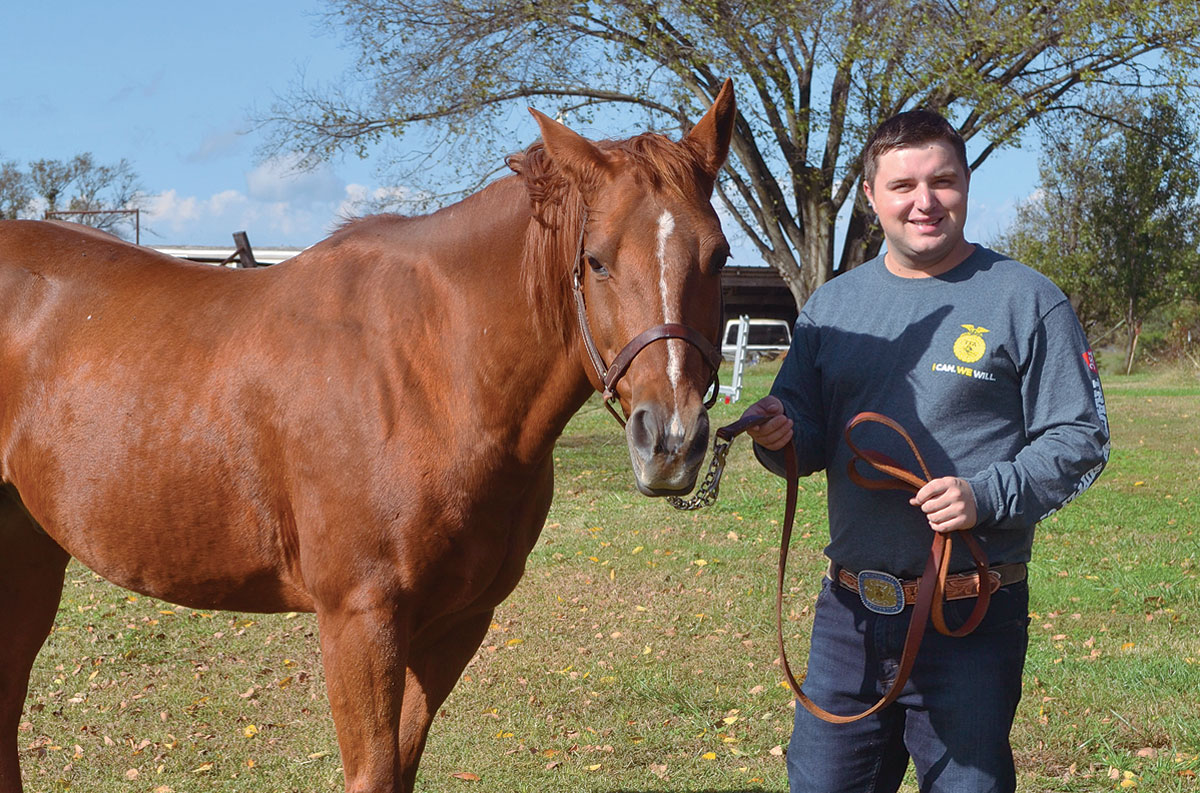 Breed an average cow to an average bull and no matter what color or breed, the end product is beef and it can be sold at the sale barn or put on the table.
Breed an average cow to an average bull and no matter what color or breed, the end product is beef and it can be sold at the sale barn or put on the table.
Breed an average mare to an average stallion and two or three years later the colt or foal from that breeding probably can’t be sold for much and it might not be good to ride. Not to mention the money in feed and vet bills to get to that point.
To avoid that kind of fix, you need someone like David Erwin.
Erwin has eight AQHA stallions on his 30 acres north of Springfield, Mo., in Greene County. His KD Ranch has been breeding horses for 15 years.
A Horse is a Horse,
Of Course …
Erwin lets his pedigrees do the talking. With names like Poco Bueno, Three Bars and Two Eyed Jack in their ancestry, Erwin’s stallions represent the cream of the crop in Quarter Horse genetics and bloodlines.
“I decided I’d find out what bloodlines are most important,” and he did his own research before buying his first stallion.
Erwin said equine enthusiasts can breed their mare to one of his stallions and improve their chances of getting the desired color, conformation and type of colt or foal.
Owners bring their mares to Erwin.
“We breed every other day while the mare is here.”
April or May is the best time for breeding in the Ozarks. That means March or April foals. “When the weather is warm and the grass is on,” is a phrase used by Erwin to describe the ideal breeding window. It is hard to get a mare to settle in the colder weather and pushing it back means foaling in the summer.
Foal Care 101
Erwin offers a “live foal” guarantee; the industry standard. Even though the mare is back under the care of its owner once it enters the trailer on the way home, if the mare doesn’t settle and have a live foal, she can be brought back to breed again for no additional stud fee.
But what happens once the foal is born is even more important. Horses are grown from the bottom up. Meaning their growth plates close in the bottom of their legs first.
Erwin stressed that young horses need 20 percent protein – not the 8 percent they may get from fescue pasture.
“If they don’t get nutrition when the cannon bones are growing, they’ll be short. The most important things on a horse are their legs. If they don’t get their legs under them, they’ll ride rough.”
“Some people will get a colt broke at two years old and start feeding it. All that will do is make its back grow.” A horse with a long back and short legs will ride rough.
KD Ranch will break colts, but only those sired from studs at the ranch.
Erwin recommends breaking a colt at two years. But, he said, wait before you ride it hard. Erwin suggests riding a couple of times a month but nothing too hard until the horse is three years old.
Happy Trails to You
Erwin’s breeding goal is to get what the mare owner wants. But often the wants and needs don’t match up.
“A lot of people want to get a World Champion horse. Then they want to go trail riding on the weekend and pet the horse during the week.”
A working horse is tightly wound. “When you want it to jump, it’s supposed to say how high," he said. But, he warned, a trail riding and working horse can be difficult to manage. "You can do something and that horse jumps plumb out from under you – never bucked a lick, but there you are, sitting in the air waiting for the ground to come up and meet you.”
It is important for a customer to understand their own needs and wants also, he explained.







